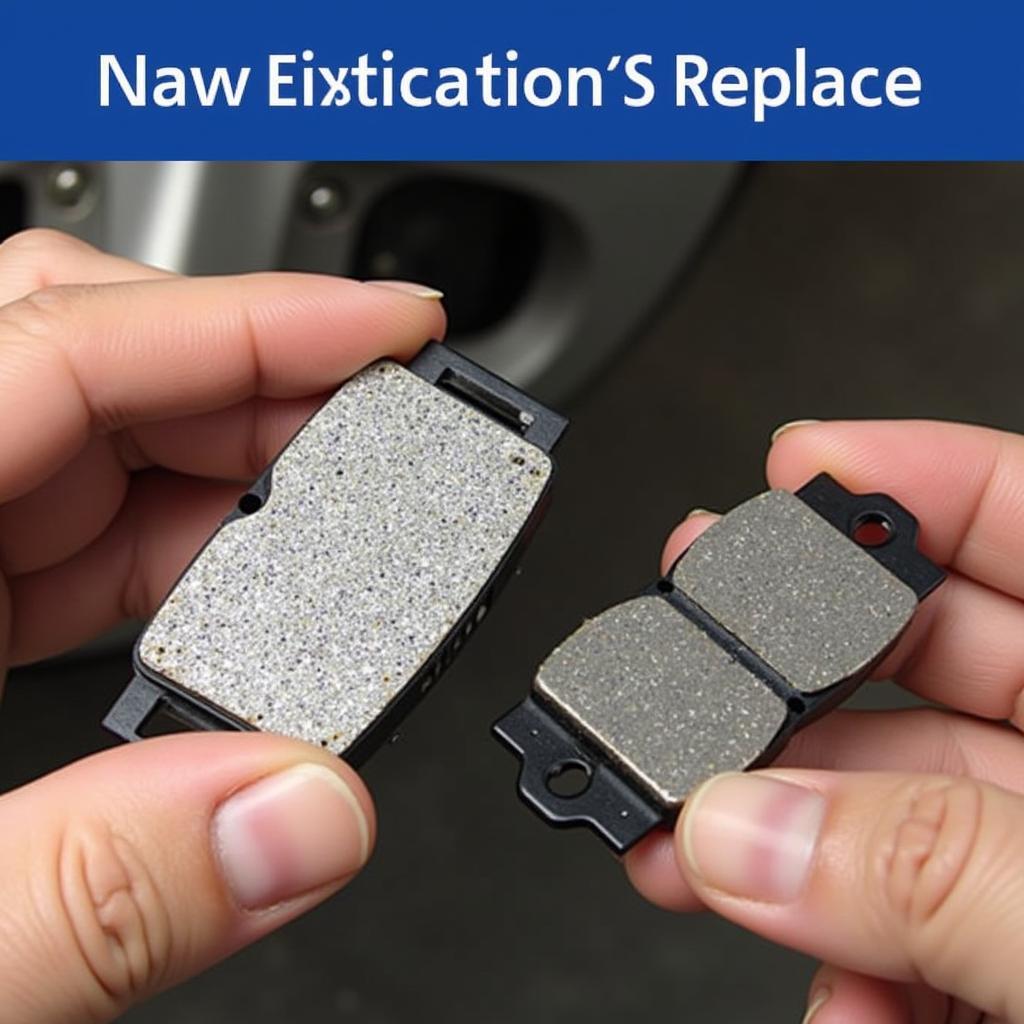What is the Service Brake on a Car?
The service brake, often simply referred to as the brake pedal, is one of the most crucial safety features in your vehicle. It’s responsible for slowing down or stopping your car when you need it to. Unlike the parking brake, which is designed to hold the car stationary, the service brake is used during driving to control speed and prevent accidents.
How Does the Service Brake System Work?
Understanding how your service brake functions can be helpful in identifying potential issues and ensuring safe driving. Most modern cars utilize a hydraulic system to activate the service brakes. Here’s a simplified breakdown:
- Pressing the Pedal: When you step on the brake pedal, it activates a lever that puts pressure on a piston inside the master cylinder.
- Hydraulic Pressure: The master cylinder is filled with brake fluid. The pressure from the piston forces this fluid through brake lines, which are metal tubes connecting the master cylinder to the brakes at each wheel.
- Activating the Brakes: The pressurized brake fluid reaches the wheel cylinders or calipers located at each wheel. This pressure forces the brake pads (in disc brakes) or brake shoes (in drum brakes) to clamp down on the brake rotor or drum, respectively.
- Friction and Stopping Power: This clamping action creates friction, converting the car’s kinetic energy (motion) into heat energy. This energy conversion slows down the rotation of the wheels, ultimately stopping the vehicle.
 Car service brake system components diagram
Car service brake system components diagram
Types of Service Brake Systems
While the basic principles remain the same, there are two main types of service brake systems used in cars:
1. Disc Brakes:
- Commonly found on the front wheels of most vehicles and often on all four wheels in modern cars.
- Utilize a caliper to squeeze brake pads against a rotor attached to the wheel.
- Offer superior stopping power and better heat dissipation compared to drum brakes.
2. Drum Brakes:
- Traditionally used on rear wheels due to their lower cost and simpler design.
- Employ brake shoes that push outwards against a drum rotating with the wheel.
- Can be susceptible to brake fade (reduced stopping power) under heavy braking due to heat buildup.
Common Service Brake Problems
Keeping your service brake system in optimal condition is paramount for safety. Here are some common issues to watch out for:
- Worn Brake Pads or Shoes: Over time, these friction materials wear down and require replacement. Signs of worn brake pads include squealing noises, a grinding feeling when braking, and reduced brake responsiveness.
- Brake Fluid Leaks: Leaks in the brake lines or connections can lead to a loss of hydraulic pressure, making it difficult or impossible to stop the car.
- Air in the Brake Lines: Air bubbles can get trapped in the brake lines, compressing more easily than brake fluid and reducing braking efficiency.
- Worn Brake Rotors or Drums: Excessive wear or warping of these components can cause vibrations and reduced braking performance.
Maintaining Your Service Brake System
Regular maintenance is key to ensuring a reliable and effective braking system.
- Regular Inspections: Have your brakes inspected by a qualified mechanic at least once a year or as recommended in your car’s owner’s manual.
- Brake Fluid Flush: Brake fluid can absorb moisture over time, leading to corrosion and reduced braking performance. It’s recommended to flush and replace your brake fluid every 2-3 years.
- Timely Replacements: Replace worn brake pads, rotors, drums, and other components as needed. Don’t wait for complete failure before addressing brake issues.
 Close up of a worn brake pad next to a new one
Close up of a worn brake pad next to a new one
Conclusion
Your car’s service brake system is a complex and critical safety component. Understanding how it works and recognizing potential problems can help you stay safe on the road. Regular maintenance and prompt attention to any brake issues are essential for ensuring optimal braking performance and, most importantly, your safety and the safety of others.

